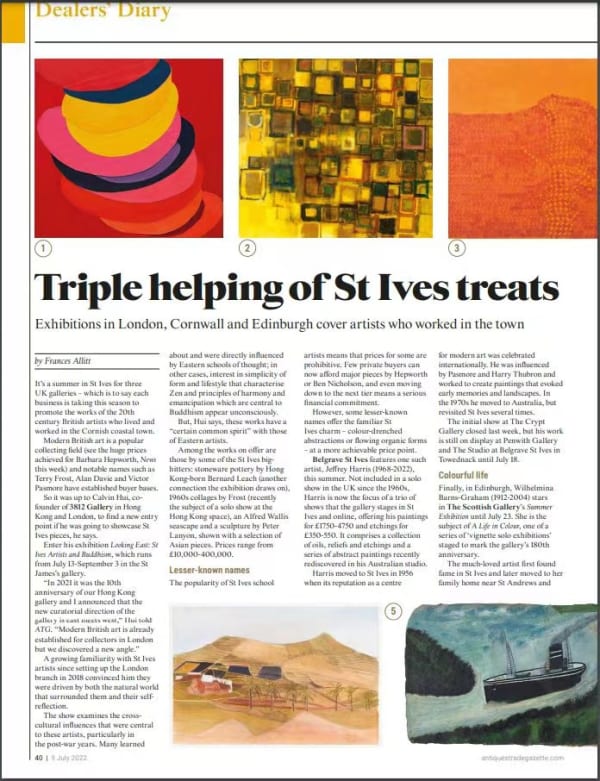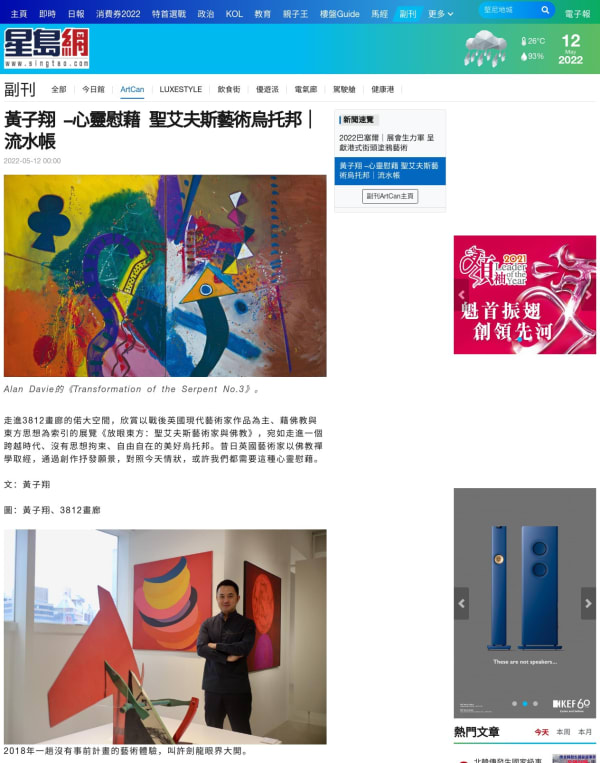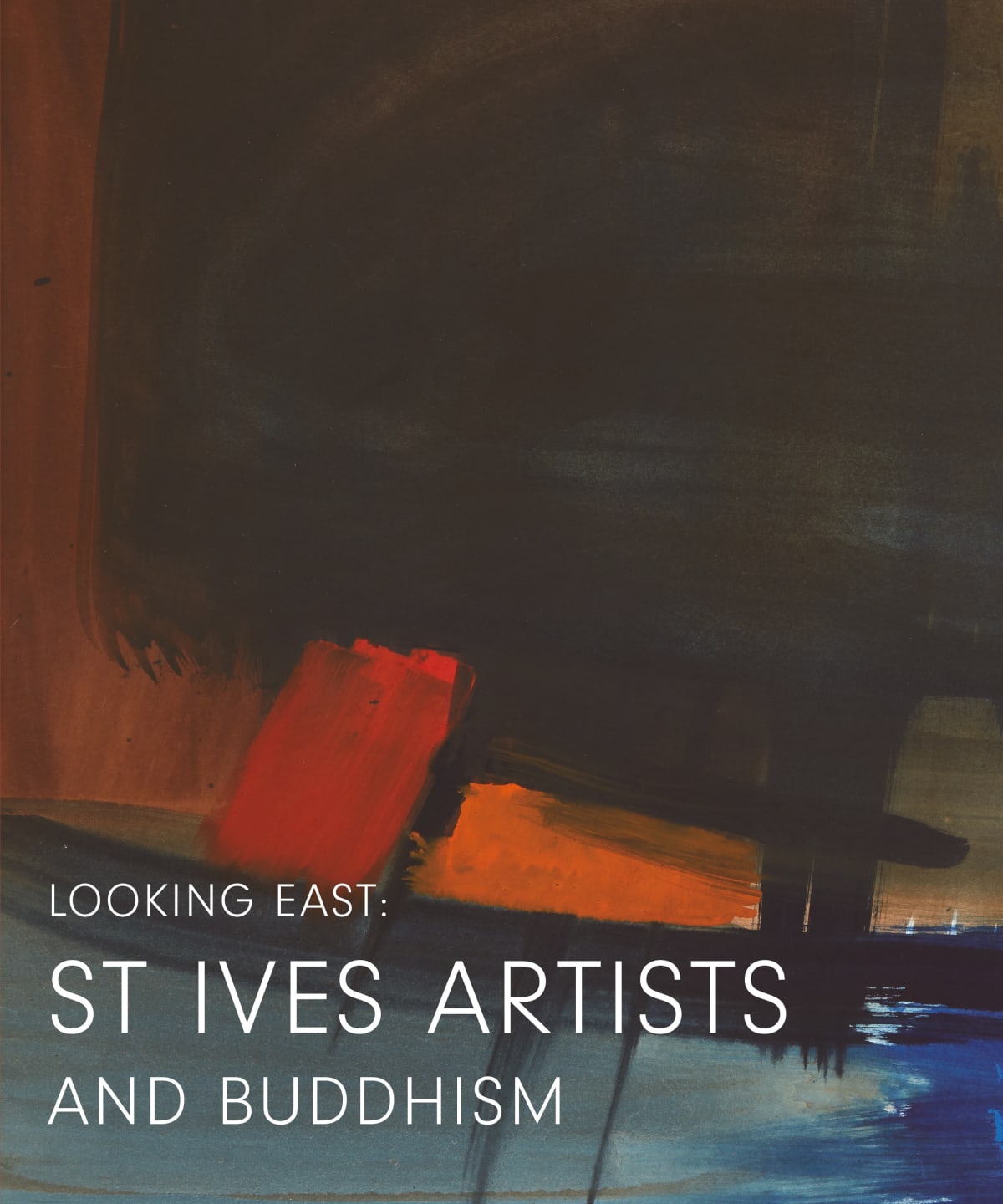Trevor Bell 特雷弗.貝爾
Trevor Bell did not think of himself as a ‘St Ives’ artist – but it is fair to say that the five years he spent in St Ives, from 1955–60, were the most formative of his long career. Before the move, Bell had painted scenes of the industrial north of England; in Cornwall, inspired by the confrontation of land and sea, his landscapes became increasingly abstract, and he began the first tentative experiments with the physical structure of the canvas that, in later life, would set his work apart from his peers. Upon his first solo show, which sold out at Waddington Gallery in London in 1958, Patrick Heron pronounced him ‘the best non-figurative painter under thirty’ working in Britain; the following year, Bell was awarded the International Painting Prize at the inaugural Paris Biennale.
St Ives also provided Bell with his first exposure to eastern philosophies, which would remain a touchstone throughout his career. On a visit to the influential St Ives potter Bernard Leach, the Japanese zen priest D.T. Suzuki imparted his teachings to the younger generation of artists in St Ives – Bell would later recall that Suzuki put ‘words around the feelings I had as a painter.’ Bell’s spirituality, as well as his continued reference to landscape – never abandoning material reality in favour of pure abstraction – meant that his paintings never devolved into mere formalism, even though he became one of the most formally experimental of all modern British painters. ‘What we should get from art is a sense of wonder, of something beyond ourselves’, Bell wrote in later life.
Born in Leeds, Bell studied at Leeds College of Art before teaching at nearby Harrogate Art College, where he met Terry Frost. In St Ives, Bell was also close with Peter Lanyon, Bryan Wynter and Roger Hilton, each of whom exerted an influence on his developing aesthetics. Bell returned to Leeds in 1960, to take up the Gregory Fellowship in Painting at the university; his experiences in St Ives gave him a new appreciation of the ‘strangeness and power’ of the landscape in the north of England, which he expressed in paintings of disquieting beauty.
By the end of the decade he had established a distinctive style, defined above all by his use of shaped canvases – pictorial supports cut to geometric forms, from circle and triangles to more complex shapes with irregular, bevelled edges, which set Bell’s works apart from the shaped canvases employed at around the same time by the Post-Painterly Abstraction group in the United States. Bell shaped his canvasses in order to heighten the internal drama of his compositions. Shadows cast by these objects on the wall or floor of the gallery space became an integral part of the work, blurring the lines between painting and sculpture and creating new forms of spatial relationship between the viewer and the work.
These experiments were included in a hugely popular touring retrospective, which began at the Richard Demarco Gallery, Edinburgh, in 1970, as well as a survey at the Whitechapel Gallery in London in 1973. The same year, Bell moved to Tallahassee, Florida, where he taught at Florida State University for nearly two decades; in their colour and vibrancy, his paintings reflected something of the heat and light of his new surroundings. In 1996, Bell returned to live and work in Penwith, Cornwall, where he remained until his death in 2017. In 2004, Bell was accorded a major career retrospective at Tate St Ives. His works are included in public and private collections worldwide, including the Boca Raton Museum of Art in Florida, the U.V.U Keleia Collection, Ljubljana, and the Victoria and Albert Museum in London.
-

Looking East: St Ives Artists and Buddhism
13 July - 10 September 2022 LondonTouring all the way from Hong Kong to London, Looking East: St Ives Artists and Buddhism explores the unique relationship between artists working from St Ives during the post-war period...Read more -

Masterpiece London
30 June - 6 July 2022 Art Fairs, LondonFor Masterpiece London 2022, 3812 Gallery is proud to present Spirit and Landscape, a curated selection of major landscape works from the last one hundred years. One of the most...Read more -

Looking East: St Ives Artists and Buddhism
21 April - 31 May 2022 Hong KongLooking East: St Ives Artists and Buddhism explores the unique relationship between artists working from St Ives during the postwar period and Eastern spirituality. Once a small fishing village in...Read more









